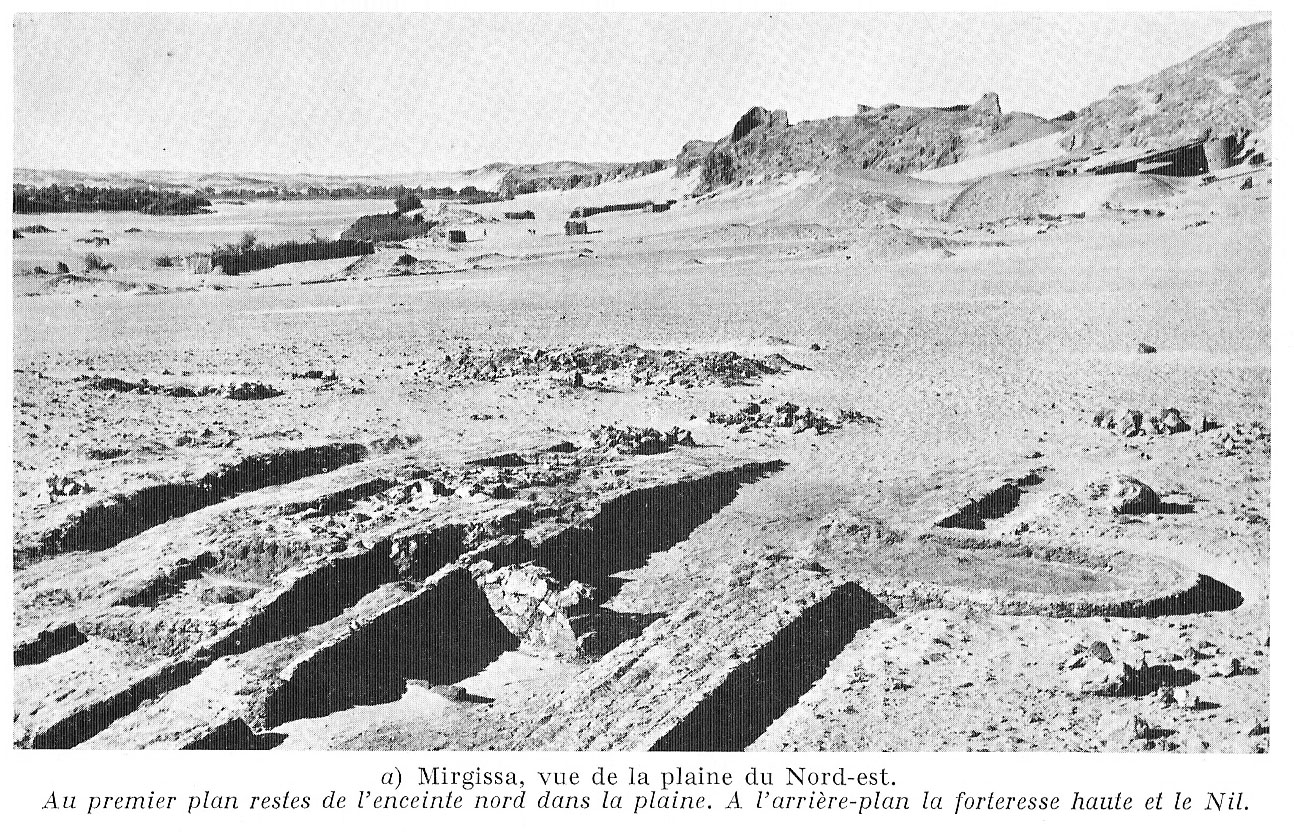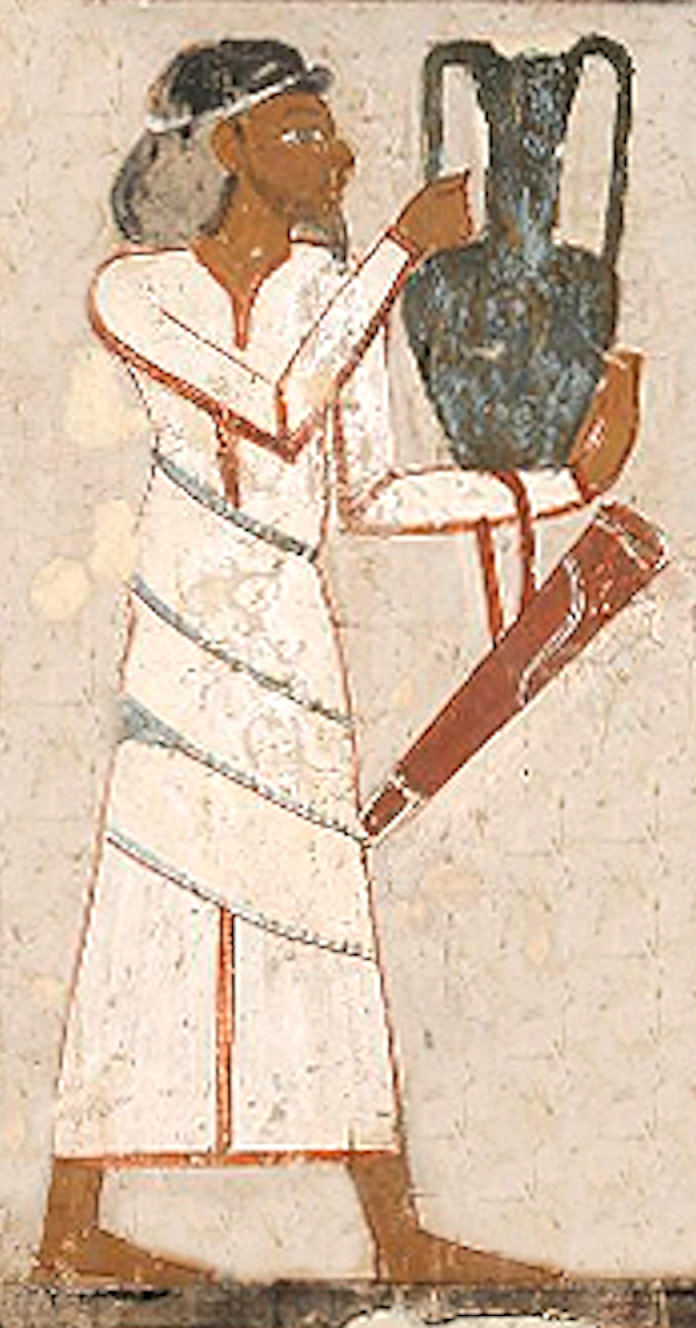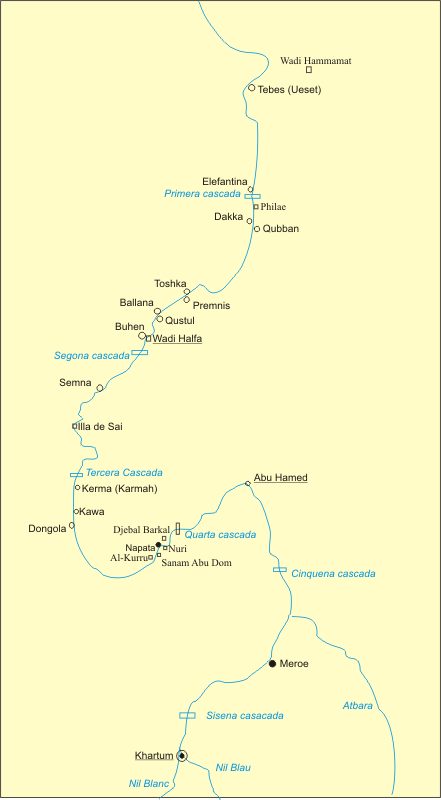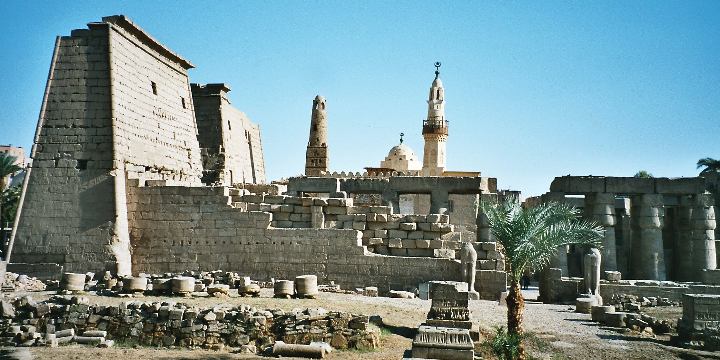|
Mirgissa2-ombre-couleurs2
Mirgissa (originally Iken) was a settlement in Northern state, Sudan. Situated at the 2nd cataract in Wadi Halfa, it contained one of the largest fortresses in Nubia. In the time of Thutmose II, 250 to 450 people inhabited the area. The first European explorer was English geologist Sir Henry George Lyons in 1892, and was excavated without Sudanese permission, by the French Egyptologist Jean Vercoutter from 1962 to 1969. In addition to the fort, excavations uncovered the remains of two cities, one of which was fortified, a northern enclosure, two cemeteries, a boat slide, and a port. Construction of the Aswan High Dam caused the disappearance of Mirgissa, which now lies under the waters of Lake Nubia. Geography Travelers from the north who reached Abusir had to leave their boats and circumvent the 2nd cataract in order to reach Mirgissa. It was situated from the harbor, where boats from the south could dock in calm waters, the rapids of the cataract preventing them from contin ... [...More Info...] [...Related Items...] OR: [Wikipedia] [Google] [Baidu] |
Mirgissa2-ombre-couleurs2
Mirgissa (originally Iken) was a settlement in Northern state, Sudan. Situated at the 2nd cataract in Wadi Halfa, it contained one of the largest fortresses in Nubia. In the time of Thutmose II, 250 to 450 people inhabited the area. The first European explorer was English geologist Sir Henry George Lyons in 1892, and was excavated without Sudanese permission, by the French Egyptologist Jean Vercoutter from 1962 to 1969. In addition to the fort, excavations uncovered the remains of two cities, one of which was fortified, a northern enclosure, two cemeteries, a boat slide, and a port. Construction of the Aswan High Dam caused the disappearance of Mirgissa, which now lies under the waters of Lake Nubia. Geography Travelers from the north who reached Abusir had to leave their boats and circumvent the 2nd cataract in order to reach Mirgissa. It was situated from the harbor, where boats from the south could dock in calm waters, the rapids of the cataract preventing them from contin ... [...More Info...] [...Related Items...] OR: [Wikipedia] [Google] [Baidu] |
Mirgissa Fortress
Mirgissa (originally Iken) was a settlement in Northern state, Sudan. Situated at the 2nd cataract in Wadi Halfa, it contained one of the largest fortresses in Nubia. In the time of Thutmose II, 250 to 450 people inhabited the area. The first European explorer was English geologist Sir Henry George Lyons in 1892, and was excavated without Sudanese permission, by the French Egyptologist Jean Vercoutter from 1962 to 1969. In addition to the fort, excavations uncovered the remains of two cities, one of which was fortified, a northern enclosure, two cemeteries, a boat slide, and a port. Construction of the Aswan High Dam caused the disappearance of Mirgissa, which now lies under the waters of Lake Nubia. Geography Travelers from the north who reached Abusir had to leave their boats and circumvent the 2nd cataract in order to reach Mirgissa. It was situated from the harbor, where boats from the south could dock in calm waters, the rapids of the cataract preventing them from contin ... [...More Info...] [...Related Items...] OR: [Wikipedia] [Google] [Baidu] |
Abusir
Abusir ( ar, ابو صير ; Egyptian ''pr wsjr'' cop, ⲃⲟⲩⲥⲓⲣⲓ ' "the House or Temple of Osiris"; grc, Βούσιρις) is the name given to an Egyptian archaeological locality – specifically, an extensive necropolis of the Old Kingdom period, together with later additions – in the vicinity of the modern capital Cairo. The name is also that of a neighbouring village in the Nile Valley, whence the site takes its name. Abusir is located several kilometres north of Saqqara and, like it, served as one of the main elite cemeteries for the ancient Egyptian capital city of Memphis. Several other villages in northern and southern Egypt are named Abusir or Busiri. Abusir is one relatively small segment of the extensive "pyramid field" that extends from north of Giza to below Saqqara. The locality of Abusir took its turn as the focus of the prestigious western burial rites operating out of the then-capital of Memphis during the Old Kingdom 5th Dynasty. As an e ... [...More Info...] [...Related Items...] OR: [Wikipedia] [Google] [Baidu] |
Hyksos
Hyksos (; Egyptian '' ḥqꜣ(w)- ḫꜣswt'', Egyptological pronunciation: ''hekau khasut'', "ruler(s) of foreign lands") is a term which, in modern Egyptology, designates the kings of the Fifteenth Dynasty of Egypt (fl. c. 1650–1550 BC). The seat of power of these kings was the city of Avaris in the Nile delta, from where they ruled over Lower and Middle Egypt up to Cusae. In the ''Aegyptiaca'', a history of Egypt written by the Greco-Egyptian priest and historian Manetho in the 3rd century BC, the term Hyksos is used ethnically to designate people of probable West Semitic, Levantine origin. While Manetho portrayed the Hyksos as invaders and oppressors, this interpretation is questioned in modern Egyptology. Instead, Hyksos rule might have been preceded by groups of Canaanite peoples who gradually settled in the Nile delta from the end of the Twelfth Dynasty onwards and who may have seceded from the crumbling and unstable Egyptian control at some point during the Thirteent ... [...More Info...] [...Related Items...] OR: [Wikipedia] [Google] [Baidu] |
Thirteenth Dynasty
In music or music theory, a thirteenth is the note thirteen scale degrees from the root of a chord and also the interval between the root and the thirteenth. The interval can be also described as a compound sixth, spanning an octave plus a sixth. The thirteenth is most commonly major or minor . A thirteenth chord is the stacking of six (major or minor) thirds, the last being above the 11th of an eleventh chord. Thus a thirteenth chord is a tertian (built from thirds) chord containing the interval of a thirteenth, and is an extended chord if it includes the ninth and/or the eleventh. "The jazzy thirteenth is a very versatile chord and is used in many genres." Since 13th chords tend to become unclear or confused with other chords when inverted, they are generally found in root position.Benward & Saker (2009). ''Music in Theory and Practice: Volume II'', p.179. Eighth Edition. . For example, depending on voicing, a major triad with an added major sixth is usually cal ... [...More Info...] [...Related Items...] OR: [Wikipedia] [Google] [Baidu] |
Semna (Nubia)
The region of Semna is 15 miles south of Wadi Halfa and is situated where rocks cross the Nile narrowing its flow—the Semna Cataract. Semna was a fortified area established in the reign of Senusret I (1965–1920 BC) on the west bank of the Nile at the southern end of a series of Middle Kingdom fortresses founded during the Twelfth Dynasty of Egypt (1985–1795 BC) in the Second-Cataract area of Lower Nubia. There are three forts at Semna: Semna West (Semna Gharb), Semna East (Semna Sherq, also called Kummeh or Kumma), and Semna South (Semna Gubli). The forts to the east and west of the Semna Cataract are Semna East and West, respectively; Semna South is approximately one kilometer south of Semna West on the west bank of the Nile. The Semna gorge, at the southern edge of ancient Egypt, was the narrowest part of the Nile valley. It was here, at this strategic location, that the 12th Dynasty pharaohs built a cluster of four mud-brick fortresses: Semna, Kumma, Semna South and ... [...More Info...] [...Related Items...] OR: [Wikipedia] [Google] [Baidu] |
Stele
A stele ( ),Anglicized plural steles ( ); Greek plural stelai ( ), from Greek , ''stēlē''. The Greek plural is written , ''stēlai'', but this is only rarely encountered in English. or occasionally stela (plural ''stelas'' or ''stelæ''), when derived from Latin, is a stone or wooden slab, generally taller than it is wide, erected in the ancient world as a monument. The surface of the stele often has text, ornamentation, or both. These may be inscribed, carved in relief, or painted. Stelae were created for many reasons. Grave stelae were used for funerary or commemorative purposes. Stelae as slabs of stone would also be used as ancient Greek and Roman government notices or as boundary markers to mark borders or property lines. Stelae were occasionally erected as memorials to battles. For example, along with other memorials, there are more than half-a-dozen steles erected on the battlefield of Waterloo at the locations of notable actions by participants in battle. A traditio ... [...More Info...] [...Related Items...] OR: [Wikipedia] [Google] [Baidu] |
Senusret III
Khakaure Senusret III (also written as Senwosret III or the hellenised form, Sesostris III) was a pharaoh of Egypt. He ruled from 1878 BC to 1839 BC during a time of great power and prosperity, and was the fifth king of the Twelfth Dynasty of the Middle Kingdom. He was a great pharaoh of the Twelfth Dynasty and is considered to be, perhaps, the most powerful Egyptian ruler of the dynasty. Consequently, he is regarded as one of the sources for the legend about Sesostris. His military campaigns gave rise to an era of peace and economic prosperity that reduced the power of regional rulers and led to a revival in craftwork, trade, and urban development."''The Pyramids: Their Archeology and History''", Miroslav Verner, Translated by Steven Rendall,p386-387 & p416-421, Atlantic, Senusret III was among the few Egyptian kings who were deified and honored with a cult during their own lifetime. Family Senusret III was the son of Senusret II and Khenemetneferhedjet I, also called Khene ... [...More Info...] [...Related Items...] OR: [Wikipedia] [Google] [Baidu] |
Senusret I
Senusret I (Middle Egyptian: z-n-wsrt; /suʀ nij ˈwas.ɾiʔ/) also anglicized as Sesostris I and Senwosret I, was the second pharaoh of the Twelfth Dynasty of Egypt. He ruled from 1971 BC to 1926 BC (1920 BC to 1875 BC), and was one of the most powerful kings of this Dynasty. He was the son of Amenemhat I. Senusret I was known by his prenomen, Kheperkare, which means "the Ka of Re is created." He expanded Egypt that allowed him to rule over an age of prosperity. He continued his father's aggressive expansionist policies against Nubia by initiating two expeditions into this region in his 10th and 18th years and established Egypt's formal southern border near the second cataract where he placed a garrison and a victory stele. He also organized an expedition to a Western Desert oasis. Senusret I established diplomatic relations with some rulers of towns in Syria and Canaan. He also tried to centralize the country's political structure by supporting nomarchs who were loyal to him. ... [...More Info...] [...Related Items...] OR: [Wikipedia] [Google] [Baidu] |
New Kingdom Of Egypt
The New Kingdom, also referred to as the Egyptian Empire, is the period in ancient Egyptian history between the sixteenth century BC and the eleventh century BC, covering the Eighteenth, Nineteenth, and Twentieth dynasties of Egypt. Radiocarbon dating places the beginning of the New Kingdom between 1570 BC and 1544 BC. The New Kingdom followed the Second Intermediate Period and was succeeded by the Third Intermediate Period. It was Egypt's most prosperous time and marked the peak of its power. The concept of a "New Kingdom" as one of three "golden ages" was coined in 1845 by German Egyptologist Baron von Bunsen, and its definition would evolve significantly throughout the nineteenth and twentieth centuries. The later part of this period, under the Nineteenth and Twentieth dynasties (1292–1069 BC), is also known as the ''Ramesside period''. It is named after the eleven pharaohs who took the name Ramesses, after Ramesses I, the founder of the Nineteenth Dynasty. Possibly ... [...More Info...] [...Related Items...] OR: [Wikipedia] [Google] [Baidu] |
Second Intermediate Period Of Egypt
The Second Intermediate Period marks a period when ancient Egypt fell into disarray for a second time, between the end of the Middle Kingdom and the start of the New Kingdom. The concept of a "Second Intermediate Period" was coined in 1942 by German Egyptologist Hanns Stock. It is best known as the period when the Hyksos people of West Asia made their appearance in Egypt and whose reign comprised the 15th Dynasty, which, according to Manetho's ''Aegyptiaca'', was founded by a king by the name of Salitis. End of the Middle Kingdom The 12th Dynasty of Egypt came to an end at the end of the 19th century BC with the death of Queen Sobekneferu (1806–1802 BC).Kim S. B. Ryholt, ''The Political Situation in Egypt during the Second Intermediate Period, c. 1800–1550 B.C.'', Museum Tusculanum Press, Carsten Niebuhr Institute Publications 20. 1997, p.185 Apparently she had no heirs, causing the 12th Dynasty to come to a sudden end, and, with it, the Golden Age of the Middle Ki ... [...More Info...] [...Related Items...] OR: [Wikipedia] [Google] [Baidu] |









